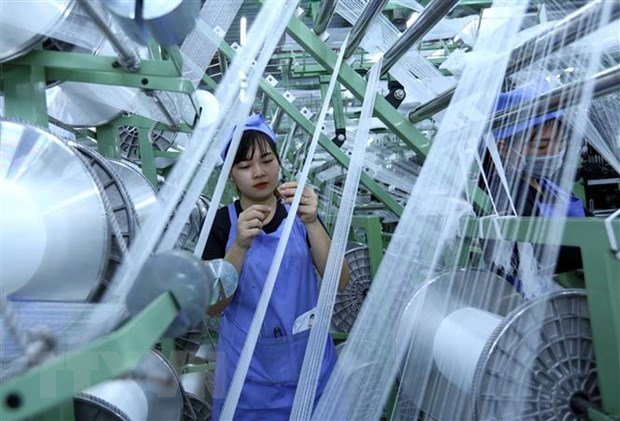Central bank aims to keep inflation below 4 percent again
Thứ Năm, 02/01/2020, 23:14
The State Bank of Vietnam (SBV) aims to again curb the inflation below 4 percent and sustain the monetary market this year, SBV Governor Le Minh Hung told a teleconference of the banking sector in Hanoi on January 2.
 |
The State Bank of Vietnam (SBV) aims to again curb the inflation below 4 percent and sustain the monetary market this year, SBV Governor Le Minh Hung told a teleconference of the banking sector in Hanoi on January 2.
The event was held in the presence of Prime Minister Nguyen Xuan Phuc to map out tasks for the banking sector in 2020.The central bank will continue to restructure financial institutions from 2021 – 2025 to bring the the non-performing loan (NPL) ratio down to below 2 percent, Hung said.
He highlighted what the banking sector has achieved in 2019, saying the SBV pursued a flexible monetary policy to stabilize the monetary and foreign currency market and keep inflation below the limit set by the National Assembly.
The average inflation rate was 2.79 percent last year, the lowest over the past three years and below the 4-percent limit, while the core inflation was 2.01 percent, the governor said.
Last September, the SBV cut several key interest rates by 0.25 percent, the first since 2017.
Two months later, the bank made the second cut with non-term deposit annual interest rate slashed by 0.2 percent and under-6-month deposit by 0.5 percent. For borrowers in priority sectors, the ceiling interest rate was reduced by 0.5 percent.
Credit grew 13.7 percent in 2019, largely funneled into businesses and priority sectors. Credit for high-risk areas has been strictly controlled.
At the end of 2019, credit for agriculture and rural development expanded 11 percent from a year earlier, accounting for about 25 percent of the total outstanding loans, while that for small- and medium-sized enterprises and for high-tech firms increased 16 percent and 15 percent, respectively.
The NPL ratio was 1.89 percent last year, Deputy Governor Dao Minh Tu said. Between 2012 and 2019, over 1.06 quadrillion VND (45.7 billion USD) of bad debts across financial institutions have been cleaned, he added.
In 2019, Vietnam ranked 25 out of 190 economies in the world in credit access index and second in ASEAN after Brunei.
Through bank-business connect programs, nearly 600 trillion VND in loans have been provided for about 125,000 companies.
Speaking at the event, Minister of Agriculture and Rural Development Nguyen Xuan Cuong urged the SBV to further foster the link between the banking and agriculture sectors towards sustainability. He asked the central bank to work with the Ministry of Agriculture and Rural Development to develop agricultural startup and experiment models and drastically control bad debts.
Minister of Information and Communications Nguyen Manh Hung, meanwhile, urged the SBV to pay greater heed to promoting e-payment markets, saying the two sides should closely coordinate to soon pilot the Mobile Money service in Vietnam this year.
The service allows users to transfer and receive money as well as make payments through mobile accounts for services such as health, education, finance, jobs and social welfare.
The scheme permits telecommunications firms to pilot a mobile money service not linked to consumers’ bank accounts.
VNA

